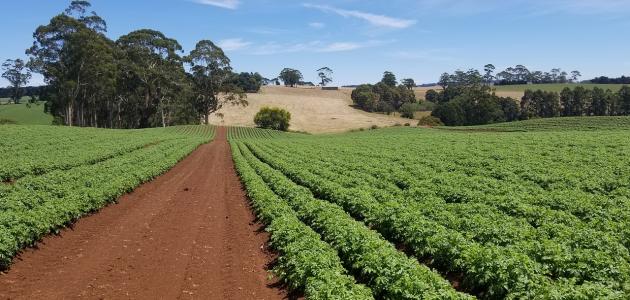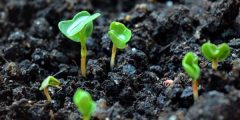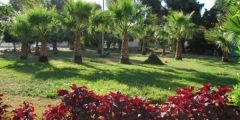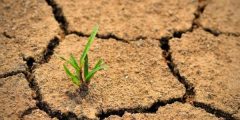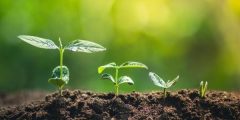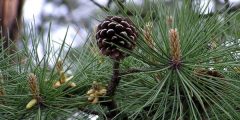metal
Minerals are considered the largest part of the soil’s components, constituting 45-49% of its total volume. There are two main types of these minerals: primary minerals that resemble the parent material, such as sand, and are often irregular in shape. As for the second type, they are secondary minerals that It has a specific mineral form that is more stable, like clay, and it contains important ions. These mineral substances were obtained by the decomposition of rocks.
water
Water is considered the second basic element of soil components, and it constitutes about (2-50)% of the total volume of soil. Water facilitates the process of chemical and biological decomposition. The process of soil retaining the amount of water depends entirely on the texture of the soil, so clay soil has a great ability to retain water. Unlike sand, organic matter also affects the soil's ability to retain water, so that the higher the percentage of these materials in the soil, the greater its ability to store and preserve water in it.
Organic matter
These materials are found in approximately 1-5% of the soil. These materials are formed by dead plants and animals, as well as the remains of microbial tissues. They are considered more productive for plant growth and are therefore land described as fertile and productive.
Read also:Germination stages
gases
It constitutes about 2-50% of the total volume of the soil. Oxygen is important and necessary for root respiration and in turn helps in the growth of plants. Nitrogen and dioxide are also important in the functions of underground plants, just like nitrogen-fixing bacteria if the soil is flooded with excess water. In the event of a flood, for example, this will lead to the death of plants because in this case gas exchange is prevented.
Microorganisms
Microorganisms in the soil are considered the final and basic element, which are found in very large numbers, such as worms of all kinds, bacteria and fungi.
Soil layers
Topsoil
In this layer are the parent minerals that are combined with organic matter and are important for the survival of plants and other organisms.
Subsoil
This layer is considered rich in minerals that accumulated in this area after it moved downward.
Parent material
The parent material is the bedrock from which soil develops, which is a mass of rocks such as basalt, quartzite, and granite.
Soil types
There are several types of soil, which we mention as follows:
Read also:What is rye?- Clay soil: It contains high levels of water, which is known as heavy soil.
- sandy soil: It contains mainly sand, which is known as light soil.
- Silent soil: It consists of particles of medium size and is wet.
- Lime rich soil: It consists of calcium carbonate and is therefore very alkaline.
